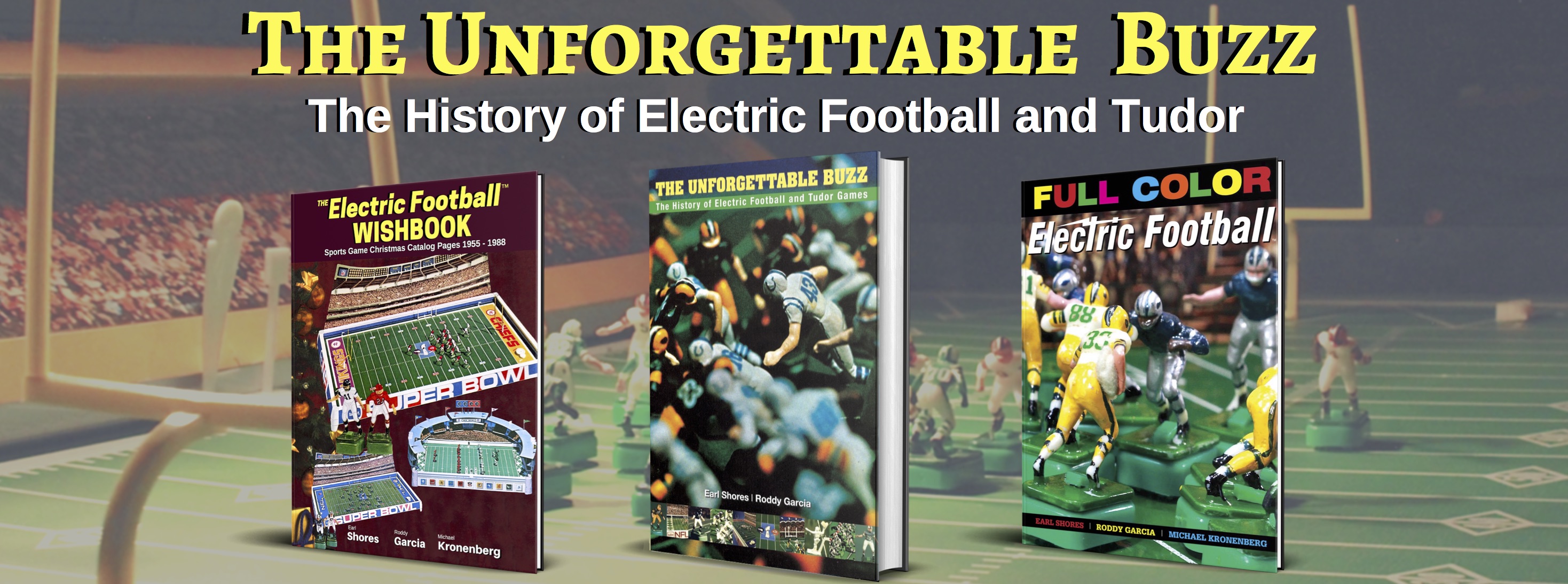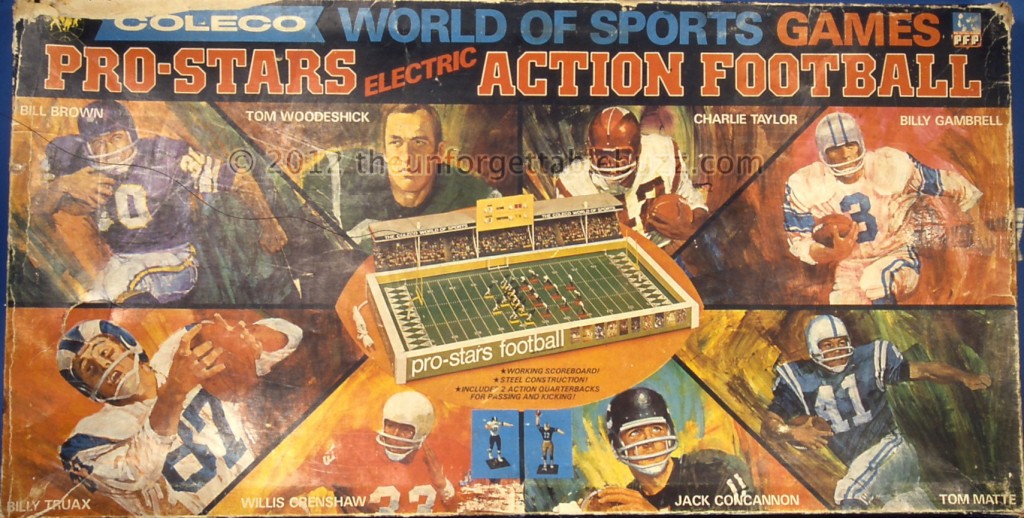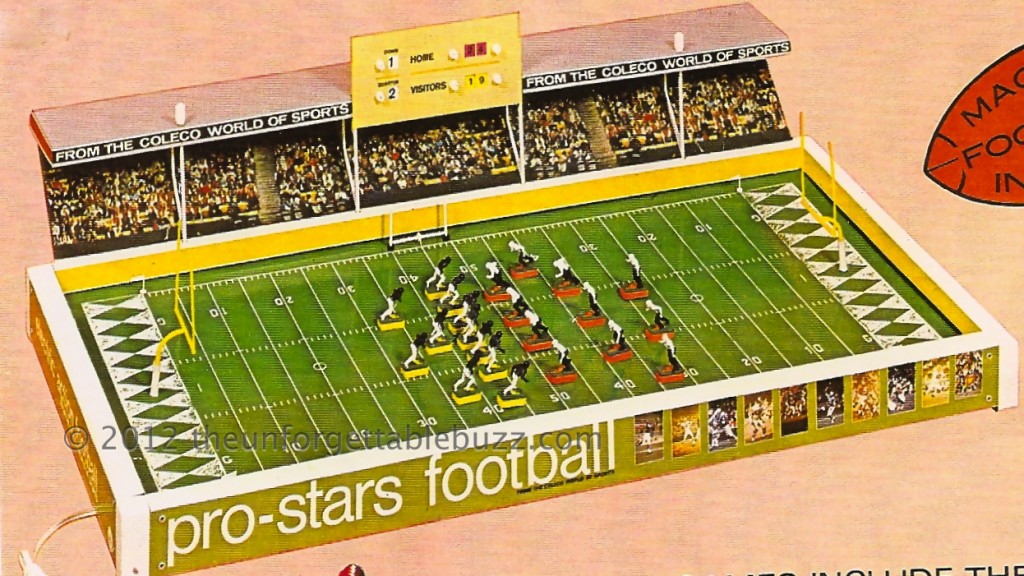When Coleco jumped into electric football in 1970, it produced some very striking games. The company had done its homework well. Coleco’s games were solidly built and featured inviting graphics, on the field and off. The large 3-D grandstands were true attention-grabbers.
The box artwork was also bold and attractive. But when looked at closely…there was something curious about the game photo Coleco had put on its box lids. Something looked oddly familiar. That’s because while the field and grandstand were brand new Coleco creations, the players, the goal posts, the end zone flags, and the first down marker, were all Tudor-produced.
The Tudor players were thinly disguised with a very basic blue and white paint job (one team had blue jerseys with white pants, while the other team had the reverse color scheme). Painted bases provided a little more camouflage, but the distinct player poses gave the figures away as clearly belonging to Tudor. And there was no disguising the rest of the parts – they were Tudor through and through.
The explanation for what Coleco did was a simple one. Coleco’s new players and accessories weren’t yet in production when the box artwork was created (most likely late 1969 or early 1970). So they substituted Tudor players and parts – and hoped nobody would notice.
Coleco never asked for permission to use the Tudor accessories. It served as a signal of just how aggressive Coleco was going to be with electric football. So Norman Sas and Lee Payne spent the fall of 1970 looking at Coleco boxes that featured Tudor players. Legal action was a possibility, but Norman ultimately took it as a form of flattery.
“We all copied each other,” said Norman Sas. “All the toy manufacturers did in those days.”
The Unforgettable Buzz covers the ruthless competition between Tudor and Coleco in great detail. It’s a story not to be missed.
Earl & Roddy


